Read Time: 6 Minutes Subscribe & Share
Morning Reading
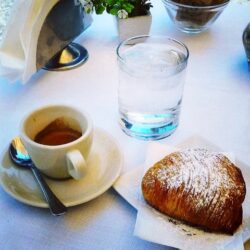 My son-in- law bitterly misses the ritual of a morning newspaper in his hands. There must be something in the setting of a bar or café, combined with the aromas of a coffee, cigarette, and newsprint that signal the beginning of a new day. Plus, surrounding you is a changing cast of characters to be observed, or not, on a stage that is not your home. Even so, since we are all trapped in front of our computer screens, he occasionally sends me an email with those highly impersonal combinations of letters and symbols – no aroma, no atmosphere – which unfailingly connect me with an article about something of interest. Sometimes it’s related to the politics of food, which I harp on occasionally in KD. Other instances are topics like the invasion of blue crabs in the Adriatic or this one about three women who were linchpins in what we know as Italian cuisine today.
My son-in- law bitterly misses the ritual of a morning newspaper in his hands. There must be something in the setting of a bar or café, combined with the aromas of a coffee, cigarette, and newsprint that signal the beginning of a new day. Plus, surrounding you is a changing cast of characters to be observed, or not, on a stage that is not your home. Even so, since we are all trapped in front of our computer screens, he occasionally sends me an email with those highly impersonal combinations of letters and symbols – no aroma, no atmosphere – which unfailingly connect me with an article about something of interest. Sometimes it’s related to the politics of food, which I harp on occasionally in KD. Other instances are topics like the invasion of blue crabs in the Adriatic or this one about three women who were linchpins in what we know as Italian cuisine today.
An Italian Import
It may come as a surprise, but the list does not include Marcella Hazan – who actually is not well known here in Emilia Romagna, even among food writers, although she was born in Cesenatico, a seaport town near Ravenna. My first really successful attempt at cooking something “Italian” came from her first book. Her pasta dough formula (for American consumption only, I know) was ¾ cup flour to one egg. It is still in my head. We carried her book and Atlas pasta machines in the shop in the 1970s, even one made for children by Ampia. I unfortunately gave mine away when my daughters had grown too old to use it. I still cook from some of her recipes, and my current cookbook of hers (which is a combination of her first two publications) is in my 109 boxes waiting for clearance to enter into Italy, duty free. I had observed Marcella from afar in a class she gave, and, curiosity piqued, did some research. I found this quote from a reminiscence by the owner of Gustiamo, which somehow fits in with my memory of that class.
known here in Emilia Romagna, even among food writers, although she was born in Cesenatico, a seaport town near Ravenna. My first really successful attempt at cooking something “Italian” came from her first book. Her pasta dough formula (for American consumption only, I know) was ¾ cup flour to one egg. It is still in my head. We carried her book and Atlas pasta machines in the shop in the 1970s, even one made for children by Ampia. I unfortunately gave mine away when my daughters had grown too old to use it. I still cook from some of her recipes, and my current cookbook of hers (which is a combination of her first two publications) is in my 109 boxes waiting for clearance to enter into Italy, duty free. I had observed Marcella from afar in a class she gave, and, curiosity piqued, did some research. I found this quote from a reminiscence by the owner of Gustiamo, which somehow fits in with my memory of that class.
Marcella drank Jack Daniels before and during our dinner; and after dinner, we sat around smoking (yes, I was once a chain smoker) and bantering in Italian, our native language. I soon learned that Marcella and I shared some key character traits, including tendencies towards sarcasm and impatience.
Ada Boni
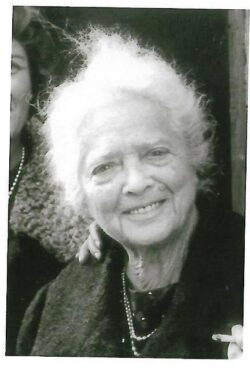 Of the three women described in this article for La Stampa, the one who will be most familiar to American cooks is Ada Boni. Her book Il Talismano Della Felicità (according to her biography in the Italian Wikipedia, she chose the title because she believed that “the happiness of a good marriage begins with a laid table”) was loosely translated and drastically edited for an American audience. The book, first published in 1928, was a huge compendium of regional recipes, written for an emerging middle class housewife, comfortable enough to have some household help but certainly not a family cook.
Of the three women described in this article for La Stampa, the one who will be most familiar to American cooks is Ada Boni. Her book Il Talismano Della Felicità (according to her biography in the Italian Wikipedia, she chose the title because she believed that “the happiness of a good marriage begins with a laid table”) was loosely translated and drastically edited for an American audience. The book, first published in 1928, was a huge compendium of regional recipes, written for an emerging middle class housewife, comfortable enough to have some household help but certainly not a family cook. 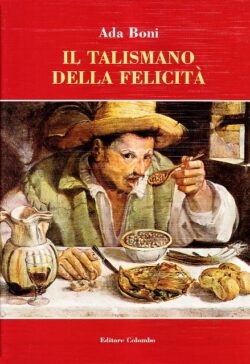 It’s remarkable that she co-founded with her husband – a sculptor and photographer who shared her love of cooking – the magazine Preziosa in 1915! This classier version of Good Housekeeping included traditional recipes (family recipes were rarely written down) along with tips on household management, lifestyle and etiquette. Her writing style was witty, kind and helpful. Preziosa ceased publication in 1959 – a remarkable run of 44 years for any magazine. When she first published Il Talismano Della Felicità, it had over 800 recipes (subsequent editions had many, many more). The only comparable book for us would be “The Joy of Cooking” or possibly “The Fanny Farmer Cookbook”, both of which my mother, a very dedicated housewife, boasted on her kitchen shelf. When this translated edition hit US bookstores in 1950, it became the go-to book for authentic Italian cooking – no spaghetti with tennis ball-sized meatballs recipes were to be found here. She later collected and published a book of Roman recipes and folklore traditions that she feared would be lost with the tumultuous changes taking place in Italy preceding WWII. Today Ada Boni’s writing continues to be republished globally.
It’s remarkable that she co-founded with her husband – a sculptor and photographer who shared her love of cooking – the magazine Preziosa in 1915! This classier version of Good Housekeeping included traditional recipes (family recipes were rarely written down) along with tips on household management, lifestyle and etiquette. Her writing style was witty, kind and helpful. Preziosa ceased publication in 1959 – a remarkable run of 44 years for any magazine. When she first published Il Talismano Della Felicità, it had over 800 recipes (subsequent editions had many, many more). The only comparable book for us would be “The Joy of Cooking” or possibly “The Fanny Farmer Cookbook”, both of which my mother, a very dedicated housewife, boasted on her kitchen shelf. When this translated edition hit US bookstores in 1950, it became the go-to book for authentic Italian cooking – no spaghetti with tennis ball-sized meatballs recipes were to be found here. She later collected and published a book of Roman recipes and folklore traditions that she feared would be lost with the tumultuous changes taking place in Italy preceding WWII. Today Ada Boni’s writing continues to be republished globally.
Amalia Moretti Foggia
The second woman featured in this charming article written by Antonio Scuteri for La Stampa, is Amalia Moretti Foggia. Born in 1872, she was one of the first women to graduate from the medical school at the University of Bologna in 1898, and the first woman in Italy to enter pediatric practice. That alone should have been noteworthy enough to have at least a lecture hall named after her. Further, she involved herself in a circle of political and intellectual progressives and was aligned with the Italian Socialist Party. She moved to Milan and became the physician to an organization that aided impoverished women workers. She remained there as a pediatrician for 4o years. Unable to have children of her own (she had suffered from a near
medical school at the University of Bologna in 1898, and the first woman in Italy to enter pediatric practice. That alone should have been noteworthy enough to have at least a lecture hall named after her. Further, she involved herself in a circle of political and intellectual progressives and was aligned with the Italian Socialist Party. She moved to Milan and became the physician to an organization that aided impoverished women workers. She remained there as a pediatrician for 4o years. Unable to have children of her own (she had suffered from a near 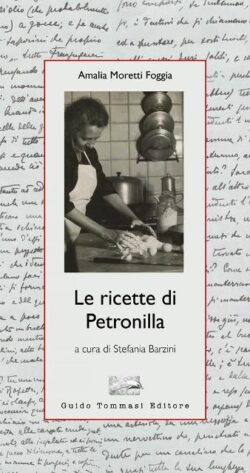 fatal bout of peritonitis) she was a fount of practical and often life-saving information for women who had families to feed and care for with little money to spare. While serving as a pediatrician, she wrote under two pseudonyms, wisely choosing a masculine name, Dr. Amal, for her newspaper articles on maintaining health and hygiene practices for families and Petronilla, a humorous homemaker dispensing simple recipes for healthy meals. She wrote these cooking columns for twenty years, and they were so popular, they were later published in a series of books. Further, during WWII, Dr. Moretti researched and created highly nutritional and inexpensive dishes that could be made with severely rationed ingredients. Her writing style was authoritative yet simple to follow – a necessity for the audience she successfully reached.
fatal bout of peritonitis) she was a fount of practical and often life-saving information for women who had families to feed and care for with little money to spare. While serving as a pediatrician, she wrote under two pseudonyms, wisely choosing a masculine name, Dr. Amal, for her newspaper articles on maintaining health and hygiene practices for families and Petronilla, a humorous homemaker dispensing simple recipes for healthy meals. She wrote these cooking columns for twenty years, and they were so popular, they were later published in a series of books. Further, during WWII, Dr. Moretti researched and created highly nutritional and inexpensive dishes that could be made with severely rationed ingredients. Her writing style was authoritative yet simple to follow – a necessity for the audience she successfully reached.
Anna Gosetti
Antonio Scurati’s third example of outstanding women in the shaping, annotating and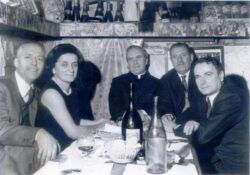 publishing of Italian recipes is actually three sisters who took over the control of La Cucina Italiana after WWII. This magazine actually was borne out of the Italian Fascist movement and was first published in 1929. It ceased publication in 1943 during the miserable years when Italian citizens were suffering under the German Nazi invasion and also embroiled in a civil war. Fast forward to 1952 when
publishing of Italian recipes is actually three sisters who took over the control of La Cucina Italiana after WWII. This magazine actually was borne out of the Italian Fascist movement and was first published in 1929. It ceased publication in 1943 during the miserable years when Italian citizens were suffering under the German Nazi invasion and also embroiled in a civil war. Fast forward to 1952 when 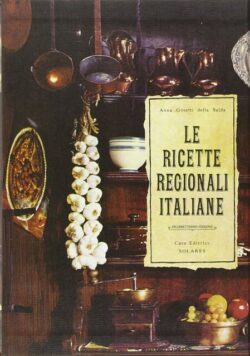 the Gosetti sisters overhauled the magazine’s publication and moved its offices from Rome to Milan. Under the leadership of Anna Gosetti della Salda, a woman experienced in the world of advertising and marketing, La Cucina Italiana‘s structure was changed and a large subscriber base was built – a base for the magazine’s success today. One sister, Gugliemina, researched and codified recipes and the other, Fernanda, photographed them for this revitalized magazine. All three wrote columns for each edition. In 1967, Anna published a large selection of the recipes into a perennially popular cookbook in Italy (unfortunately never translated and published in the US or UK). It represented an amazing amount of research from all regions of Italy. Under Anna’s direction, all recipes were meticulously measured and tested and it stands out as a modern encyclopedic catalog of Italy’s highly individualized regional cuisines.
the Gosetti sisters overhauled the magazine’s publication and moved its offices from Rome to Milan. Under the leadership of Anna Gosetti della Salda, a woman experienced in the world of advertising and marketing, La Cucina Italiana‘s structure was changed and a large subscriber base was built – a base for the magazine’s success today. One sister, Gugliemina, researched and codified recipes and the other, Fernanda, photographed them for this revitalized magazine. All three wrote columns for each edition. In 1967, Anna published a large selection of the recipes into a perennially popular cookbook in Italy (unfortunately never translated and published in the US or UK). It represented an amazing amount of research from all regions of Italy. Under Anna’s direction, all recipes were meticulously measured and tested and it stands out as a modern encyclopedic catalog of Italy’s highly individualized regional cuisines.
I never would have discovered these remarkable stories on my own. It really dovetails with my reading of the Italian women in the Partigiani Movement, who have not been awarded the recognition they deserve. Ada Boni, perhaps, as she was translated for an English-speaking audience. But Anna Gosetti, who rebuilt a prominent Italian food magazine out of the ashes of WWII and Amalia Moretti – politically liberal doctor who developed and successfully published workable recipes for Italian families in a calamitous period of Italian history, would have remained only as occasional footnotes. These brilliant women, along with Marcella Hazan, deserve a prominent place in our history and on our cookbook shelves.
Shop the Post

Kitchen Detail shares under the radar recipes, explores the art of cooking, the stories behind food, and the tools that bring it all together, while uncovering the social, political, and environmental truths that shape our culinary world.
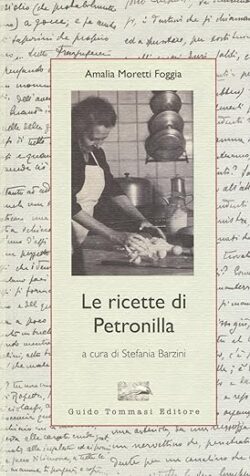
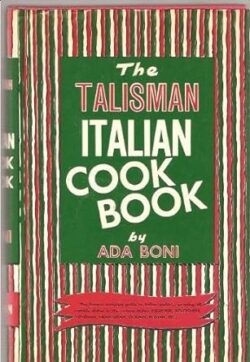
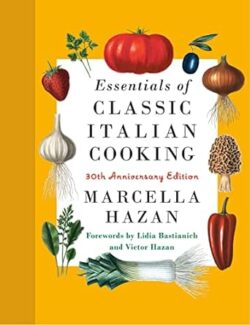
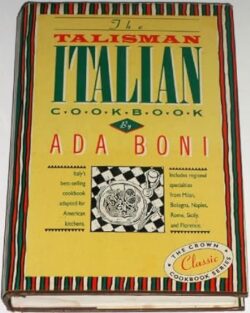




Fascinating, thanks Nancy. What a pity some of these were never translated into English, I particularly would have loved to try Amalia Foggia’s recipes. Such accomplished women!
Hi Maria,
I was interested too. I will see what I can find and possibly translate a promising one.